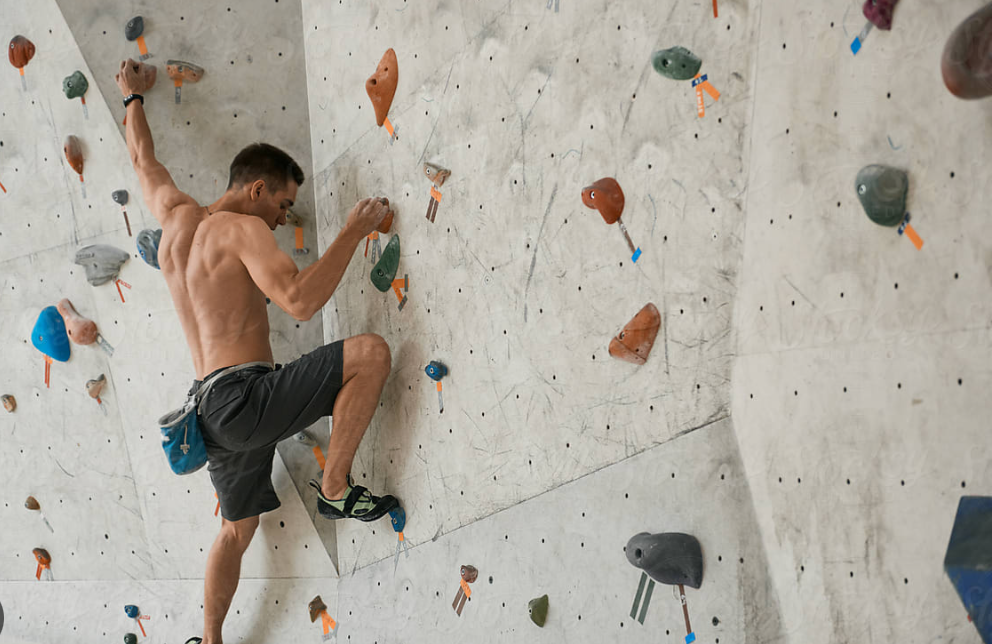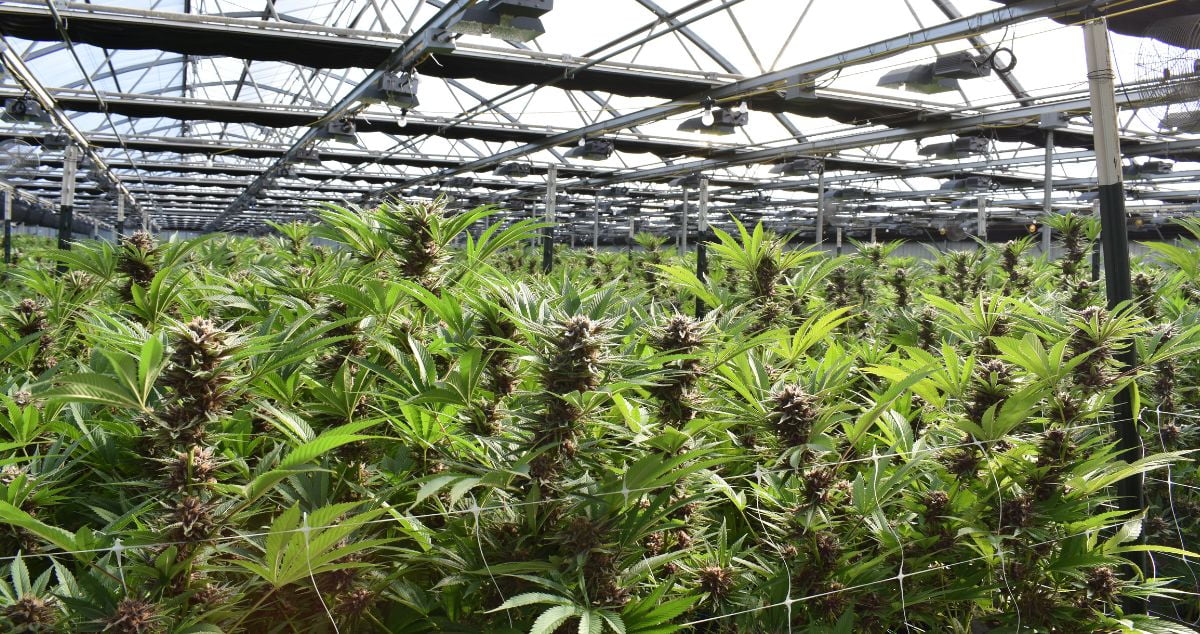Training
Minnesota Marijuana School
Published
2 years agoon
By
admin
Minnesota Marijuana School has open enrollment going on! The Cannabis Training University is the first to open in the state of Minnesota and you are welcomed to register now before classes fill up too fast! Just kidding! There is always a place here for you, but your future is depending on you to take action now.
The Various Fields
No matter where you reside in the United States, you can begin learning about marijuana right from the comfort of your own home, and you can thank the Cannabis Training University for the wealth of knowledge that it provides in its many courses online. Most cannabis schools are not equipped with qualified staff who have a lifetime of experience in a wide range of fields such as:
- Marijuana dispensaries
- Cannabis delivery
- Marketing and advertising
- Marijuana career
- Cannabis cultivation
- Marijuana cooking
- Horticulture
- Marijuana growth
Cannabis Patients in Minnesota
The laws in the state of Minnesota allow cannabis patients to possess a thirty day supply of weed. However, this is not weed that can be smoked. It is more in the form of hash oil. Currently, there are roughly 1,520 registered medical cannabis patients in the state of Minnesota. Patients are considered qualified, if they have one of these illnesses:
- HIV/AIDS
- Terminal illness
- Crohn’s disease
- Seizures
- Severe muscle spasms
- Cancer
- Intractable pain
- Glaucoma
CTU is the marijuana school that teaches students about the laws that govern not only patients, but growers, dispensaries and caregivers. Right now, the state of Minnesota’s medical marijuana program does not allow caregivers.
Minnesota Cannabis Laws Updated
Everywhere in the US, including Minnesota, the cannabis market is booming. Minnesota will legalize medical marijuana in 2021, and it will likely legalize recreational marijuana in 2023. This implies that those who are interested in entering this expanding industry will soon have plenty of work chances.
Licenses for Cannabis Businesses in Minnesota
In Minnesota, you need to apply for a license from the state before starting a cannabis business. Grower, processor, and dispensary licenses are the three types that are offered. Before submitting an application for a license, you should conduct your homework because each license has a different set of requirements.
In general, you will need to present proof of residency, financial records, and a thorough business plan outlining your intended operations.
Candidates for cannabis jobs in Minnesota must also pass a background investigation and have no prior convictions for using illicit or restricted substances.
Minnesota Jobs for Bartenders
The next stage is to hire staff after you have received your license and launched your cannabis business. To connect with consumers and help them with their purchases, the majority of cannabis businesses employ budtenders—employees who manage the sale of cannabis goods.
Budtenders need to be extremely knowledgeable about marijuana strains and products in addition to having top-notch customer service abilities.
Budtender roles can be full-time or part-time depending on the type of business you run and the hours you offer, with competitive pay ranging from $15 to $ 18 per hour based on experience level and whether they have obtained a budtender certification from a recognized cannabis institution.
Cannabis Career Outlook in Minnesota
Given the anticipated legalization in 2023, the outlook for marijuana jobs in Minnesota is very promising. There will be a wave of new businesses springing up, which will increase the number of job possibilities available to anyone who want to work in this sector.
In addition, there will be a lot of need for skilled budtenders as well as for jobs like extraction technicians and lab analysts who can check the quality of products before they are released onto the market. We anticipate that as more states legalize cannabis use, there will be an increase in the number of jobs available.
For those wishing to enter the cannabis employment industry, the future is promising! Now is a great time to start learning about what it takes to receive a license and start establishing your career within this quickly increasing business, since legalization is expected to happen in the early months of 2023.
There are many options out there waiting to be explored, whether you’re looking for a budtender employment at an established dispensary or want to put up your own store soon. S
Don’t wait any longer; begin looking into all the cannabis employment options Minnesota has to offer!
Trained Cannabis Instructors
In some cases, people think that they can create a marijuana school with limited knowledge and none or little background in the marijuana industry and business.
FREE E-BOOK
Get our top rated STRAIN GUIDE!
Cannabis Training University has hired trained individuals with lots of experience to provide training to students who want to learn more about the industry so they can land a cannabis job or career.
In fact, the educational and training backgrounds of each instructor are provided before you enroll. You can ask students like Jim who said “I signed up for classes at this Minnesota marijuana school because of the caliber of the instructors and I never regretted it.”
Cannabis School of Choice
Cannabis Training University is Minnesota’s marijuana school of choice since it offers students a wealth of knowledge that they may not be able to obtain elsewhere. More importantly, CTU is not a ‘fly by night’ college. It has been opened since 2009 and was the first marijuana school back then.
There have been thousands of graduate students who have gone on to lead productive careers in different areas of the cannabis industry. You can become a graduate too and be in the same position by enrolling today and choosing a place in the industry, whether you want to be any of the following or not:
- Marijuana dispensary owner
- Budtender
- Marijuana grower
- Cannabis trimmer
- Marijuana edibles chef
- Marijuana delivery driver
Learn At Your Pace
At this marijuana school, you will learn various grow methods and information related to marijuana strains. You will be able to access everything from a mobile device and from anywhere in the world. Not all marijuana schools offer the same curriculum or the same cost for courses.
At CTU, you pay less than two hundred dollars for courses and moreover, you get to pick your classes from a large curriculum.
You get to learn at your own pace and you will be able to access course information as many as six months after completion. Interactive learning is in the form of videos and electronic books. You will never be bored.
The Cannabis Training University is like no other 420 college. It is the best choice for cannabis certification.
What is happening with Minnesota cannabis legalization?
A House committee in Minnesota adopted a marijuana legalization bill with a number of changes in January 2023. This legislation builds on a reform measure that was approved by the full House in 2021, and it is the first of what is anticipated to be several committee pauses.
What are the cannabis edibles laws in Minnesota?
According to the recent law, Minnesotans can purchase foods and drinks with a maximum of 50 milligrams of THC per package and up to 5 milligrams of THC each serving.
What is the Minnesota cannabis registry?
The Minnesota Cannabis Registry is a program that makes it easier to find qualifying users and caregivers who have been given the go-ahead by the state health authority to legally obtain, use, and possess cannabis for medical purposes.
Law enforcement officials can also use the registry to verify a patient’s or caregiver’s status. It was started in 2014 after the state’s medicinal marijuana statute was passed and is overseen by the Minnesota Department of Health.
“
There are over 300,000 jobs in the cannabis industry. CTU trained me for one of them!
– Johanna Rose
Makes $24.50 @ THC +
This registry’s goal is to restrict access to medical cannabis products to only those who are legitimately qualified under Minnesota state law. Patients who fit the criteria must register with the registry and acquire certification from their healthcare practitioner in addition to fulfilling other requirements such having documentation of residency.
Additional requirements for caregivers include passing background checks and enrolling in specialized training programs.
Additionally, the register offers crucial details regarding Minnesota’s medicinal cannabis products’ testing requirements, product labeling, safe storage, and secure transit.
In order for companies and employees to understand how these laws affect them, it also provides instructional materials about medicinal marijuana regulations.
The Minnesota Cannabis Registry is making a lot of effort to make sure that medical marijuana usage is done responsibly, legally, and safely as access to it increases.
You may like
-


Make Autumn Awesome With The Best Oreo Cookie Hacks
-


Can An Air Purifier Get Rid Of The Marijuana Smell
-


Maternal Cannabis Use Does Not Lead to Higher Rates of ADHD or Behavior Disorders in Children Says New Massive Medical Study
-


The Court Case That Could Legalize Marijuana in America
-


Leafly Buzz: 12 top weed strains of October
-


Permanent Marker—MOCA, California, fall 2024

Bouldering and rock climbing have exploded – can cannabis help with this hot activity?
Even 5 years ago, rock climbing and bouldering were niche activities for those with a passion. But since it has become a fun, core strengthening, urban activity and is now a multi-billion dollar industry. Cities, towns and cruise ships now have climbing gyms and the popularity as soared. North American climbing gyms alone almost reached $1 billion dollars last year, this doesn’t count outdoor, equipment and other markets. With its popularity, it blends in with other lifestyle options, so here are key tips on bouldering and marijuana.
RELATED: Marijuana And Exercise, All Part Of The Healthy Cannabis Life
France is was the birthplace of modern bouldering. Pierre Allain, a pioneering French climber in the mid-20th century, loved the Fontainebleau forest and was among the first to see bouldering as a unique discipline within climbing, not just a training tool. He developed climbing shoes with rubber soles, increasing climbers’ ability to grip the rock, a revolution which helped bouldering gain recognition as a legitimate sport. Around the same time in the US, a gymnast as well as a climber, John Gill approached bouldering with a focus on strength, balance, and dynamic movement. Regarded as the father of modern bouldering, he introduce the concept ‘clean climbing’ – leaving no trace on the rock – which has influenced generations of climbers to respect and protect the natural environment.

A Climbing Magazine anonymous survey of professional climbers a couple years ago, in which most said they used it for recovery while others said they sometimes climbed while using cannabis. A deeply-researched review conducted by scientists, including members of the World Anti-Doping Agency and National Institute on Drug Abuse, found that “the use of cannabis as doping will not help to gain a competitive edge by any means.” But the review also highlighted how cannabis can help athletes deal with anxiety in high-pressure situations—climbing includes plenty of high-pressure situations—and “play a major role in the extinction of fear memories” from traumatic athletic events, such as suffering a tough whipper or something more serious.
RELATED: Science: Cannabis Does Not Make You Lazy After All
“Cannabis improves sleep and recovery after an event, reduces anxiety and fear and aids the forgetting of negative events such as bad falls and so forth,” researchers wrote. “Cannabis enhances sensory perception, decreases respiratory rate and increases heart rate; increased bronchodilation may improve oxygenation of the tissues.”

Marijuana can also help you in the gym during training sessions. A University of Colorado study concluded using marijuana before exercise “increases motivation” as well as “enhances recovery from exercise.” Recovery is huge, particularly in sports brutal on the body like climbing. Professional athletes in football, basketball, hockey, fighting, and even golf have all come out in favor of using cannabis as a recovery tool, with some saying CBD is enough.
RELATED: How To Use CBD For A Better Night’s Sleep
More than those other sports, though, safety is of the utmost importance while climbing. Combining marijuana and climbing should be done with serious intention and without harming belay partners or fellow climbers. An online survey conducted by Training Beta, a website dedicated to rock climbing training, explored how readers felt about the relationship between climbing and cannabis. Among 1,462 respondents, 47% said they weren’t comfortable with high belayers and 46% responded that it depended on the setting and person belaying them.

Marijuana cultivation is a hobby that keeps on giving, and techniques like cannabis plant training can take your grow to the next level. Once you have a few harvests under your belt with our Harvest Guide and a successful light and nutrient schedule with our Plant Care Guide, you’re ready for the next step. Optimize your output and increase yields by training cannabis plants as you grow them.
Plant training is a cultivation technique that involves manipulating marijuana plants with tie-downs, unique trimming, trellises, and more to increase the number of bud sites and yields. Because cannabis is such a vigorous plant, it will continue to thrive in these conditions. It will also expose more of the plant to light, allowing for more uniform buds in your grow.
What is cannabis plant training?
Few things pique a grower’s interest more than “increased yields,” and training cannabis plants does not disappoint. The great thing is that you don’t need to change the environment or anything in your lights to see drastic improvement. Physically forcing the cannabis plant to grow in a preferred way lets you avoid the natural tendency to end up looking like a Christmas tree with one single massive cola. Cannabis plant training creates multiple smaller bud sites allowing your plants to be more efficient with your resources.
Training cannabis maximizes the time and energy you put into your grow; there are multiple different plant training techniques to do this, including bending, pruning, and more, covered below. Many of the methods can be combined to increase effectiveness. Relying on the resilient nature of the cannabis plant and a good amount of patience, you can have a sea of green in your tents and a harvest of uniform buds at the end of the line. Training plants also has additional benefits, including controlling airflow and humidity and creating an even canopy.
What is the best time to train cannabis plants?
Most cannabis plants can benefit from plant training. It’s generally always recommended, but when to begin and how long to proceed varies based on the chosen technique. The first caveat is that you want to avoid damaging or pruning auto flowers heavily due to their fixed timeline, and the second is that you don’t want to train late in the lifecycle during flower. The luxury of an extended vegetative stage for photoperiods allows for more intense training.
When your plant canopy lacks uniformity, it may be a sign that it’s time to begin cannabis plant training. With indoor lights covering a specific area, you want to ensure the plant fully utilizes that space. Naturally, growing cannabis plants will create a canopy with high points at the top center cola and low points at the bottom, creating cannabis of different structures and quality across the plant. Another sign of a need for training in your cultivation practice is larf or small airy buds on the lower sections of the plant. Eliminate these bud sites to save energy or expose them to more light with cannabis plant training.
Avoid these mistakes when training cannabis plants
In addition to the specifics below, there are a few general guidelines to remember when training cannabis plants. While cannabis will recover from overtraining or trimming, it will take time.
- If you stress the plant too much, you may stunt its growth instead of improving it. A little goes a long way; be thoughtful about your actions here and watch how your plants respond to discover that fine line for your setup.
- Wait until plants grow to the sixth node before starting your training, and don’t start anything late into your plants’ flowering period. Remember to move the plant around slowly and carefully to avoid that sad sound of a snapping branch when training plants and support those improved buds to keep them healthy.
You’ll need cultivation scissors for trimming, soft plant ties for holding branches down, and screens or nets for sea of green methods. Use stakes and trellis systems to support cannabis plants and twine to create cages or nets. You’ll also need a good awareness of your plant timeline and the methods you’re using to avoid stressing your plants out too much. Experience is also valuable here, so start training cannabis plants today if you haven’t already to get a few reps with it.
What is the right training technique for your plants?
Knowing the variables and details of your setup and goals is necessary to answer this question. When picking the proper training technique for cannabis plants, read the quick summaries below. Then explore our range of how-to articles and Grow Bible to understand the options, along with the pros and cons of each technique.
Low-Stress Training (LST)
Low-Stress Training (LST) is exactly as it sounds – a minimally invasive technique for cannabis plant training. By tying down new growth on the plant, you open it up and allow more light to reach the center and lower branches of the plant. This method works well when paired with topping but can work without topping too.
Using ties, twine, or plant tape along with clips or drilled holes around the edge of your pot, you can train your cannabis plant slowly and avoid causing stress. As new growth appears from the main stem and gets long enough to tie down, continue doing so to create a nice, even canopy and high-yielding plant. It may look odd at first, but when you see the results during the flowering stage, you’ll understand.
Read our in-depth guide on how to apply low-stress training to learn all of the ins and outs of this technique.
High-Stress Training (HST)
High-Stress Training (HST) is a heavier-handed cannabis training technique encompassing a few different methods we’ll discuss later in this article. Topping, along with any training methods that damage or break the plant intentionally when bending or cutting, is an example of HST
This technique is often done before the plant enters vegetation to allow enough time for recovery. While these methods may surprise you, again, seeing the results will change your mind and increase your awe for the cannabis plant overall. Abrupt training like HST will deliver energy to lateral branches across the plant instead of focusing it on the top center colas.
To see exactly how to apply this more intense training method, check out our high-stress training guide.
Manifolding
Manifolding is a form of cannabis plant training that falls under HST. At its core, this is a result of sequential topping. Instead of removing the apical meristem once, you repeat this process every few nodes to create an array of branches, each producing a solid flower like a main cola would. Without the apical meristem found at the top of growing plants, their energy is more uniformly diverted across the plant.
To achieve the manifold effect, split the plant in two during topping. Then after a period of growth, split those main branches further in two to create four and then eight sites. When done in the proper environment, you’ll get a picturesque cannabis plant with eight long, even dense colas. While invasive, this technique can produce wonderful results quickly and reduce the chance of rot that could occur in larger buds.
Where some techniques have you constantly making adjustments like LST, manifolding sets the plant up for success early in its lifecycle.
To learn how to do this properly, read our guide that explains how to manifold like a pro.
Lollipopping
Lollipopping is another HST cannabis plant training method. Lollipopping takes that natural Christmas tree look and manicures it down to a lollipop by trimming all growth to a certain point on your cannabis plants. By doing this, you encourage the plant to focus energy on the topmost colas.
When lollipopping, remove any leaves that are not in the light. Anything that would be obscured by buds at the top of the plant is removed. Visualizing a line across your canopy and trimming the growth below that line is helpful. An added benefit is the airflow each plant can get by freeing up the layers below the main canopy.
We show you exactly how to do this correctly in our pro guide to lollipopping.
Sea of Green
Sea of Green (commonly known as SOG) creates an even canopy that cannabis plant training uses to maximize light use. But instead of directly bending, tying down, or altering your plants, this method forces plants to flower early. That said, don’t try this on your autoflowers.
The goal is to flower photoperiod plants young in order to keep a low footprint for each plant. This lets you pack in as many plants as possible under the lights.

Shop Feminized Seeds
- Female plants for healthy bud
- Quality genetics, high yields
- All popular cultivars
Instead of harvesting 3-5 large plants, you’ll be taking down 15-20 small plants. The result is a dense canopy of smaller plants and a higher yield harvest than larger plants that may take up valuable space under the lights. This approach is good when space is at a premium. It also pairs very well with lollipopping. Before you flip the young plants to flower, lollipop them first to grab your clones for the next round.
Our in-depth guide on how to grow a Sea of Green will help you through the process.
Scrogging
Scrogging is a common technique that creates a “Sea of Green” look to the canopy by securing a screen or net across the canopy at a fixed height. New growth is tied to the screen exposing the whole branch to light. This method optimizes a small space and creates a uniform and plentiful harvest.
The support scrogging provides is also excellent for the plant. As the buds mature and become heavier, the screen can hold them up, preventing unnecessary breaks or bends in late flower. This is one of the easier techniques to get started with in cannabis plant training, and sure to provide improved harvests.
Our scrogging guide shows you how to set up and maintain a proper scrog.
Super Cropping
Super Cropping is an interesting technique that also qualifies as HST. This method involves carefully breaking the stalks of the cannabis plant. You read that right! The trick here is to bend and snap the inner tissues of the plant without damaging the outer skin. Plant tape and/or duct tape are your friend if you make a mistake or two. Do this step early in veg to allow for ample recovery time.
Bending your plant’s stem slowly to a 90-degree angle and tying it that way for a week or two of growth encourages a screen of green kind of lateral growth without using a screen. There’s even a theory that this may increase THC production on the super-cropped branch. The results resemble LST, and the techniques can be combined for a hybrid approach. The key is visualizing a canopy line and uniformly bending things to that level. This method can also be combined with lollipopping to focus energy at the top, but space your training out to avoid stressing the plants out.
Learn how to super crop your plants without doing (too much) damage in our super cropping guide.
Monster Cropping
Monster Cropping continues the trend towards interesting but can provide excellent results and a unique, efficient plant structure. This method harnesses the plant’s response to stress and optimizes the grow. Monster crop by waiting for plants to reach mid-flower stages, then take clones to essentially “re-veg” your plants, putting the clones back through a second veg cycle. The stress of this stage change creates vigorous plants with more bud sites and bushier growth.
While I haven’t tried monster cropping, many claim monster-cropped clones outpace standard clones in production. Remember, this method will not work for autoflowers; once they start flowering, there is no going back. Check out our selection of autoflowering seeds to find the right seeds for your monster grow!

Buy Autoflower Seeds
- For new and experienced growers
- Easy-growing, low maintenance
- All popular cultivars
The stress of this process will kill off a few clones in the beginning, so make sure to take more than you need. You can combine this method with many of the others listed in this article, as Monster Cropping is more of a cloning technique than a trimming or training process but still falls under HST in cultivation.
Learn more about this crazy but effective technique in our monster cropping guide.
Trellising
Trellising is a necessary evil in cannabis cultivation. As your plants get heavier as they mature, they fall over and can eventually snap if left unattended. This is why plants in early flower are trellised with netting or twine and stake solutions to support flower growth through harvest. Trellising can be notoriously difficult to reuse due to sticky harvests, so handling this in a quick and/or disposable way is worth considering.
There are many different approaches to trellising; you can use premade solutions like cages or custom build frames to trellis up sections of your grow. Where the scrogging method adds a screen to the top of the canopy, trellising puts this around the entire plant. Outside of the support given, the trellis provides many tie-down locations for combination with other LST and HST cannabis training techniques.
We’ll show exactly what we mean in our trellising guide.
Schwazzing
Schwazzing is defoliation taken to the extreme. Typical defoliation may remove excess fan leaves or lollipop plants. Schwazzing removes 100% of the fan leaves of a cannabis plant. This process can be done once or twice in the flowering stage of your grow. Complete your first shwazze on day one of flowering, with an optional second around day twenty.
While it may sound like overkill, this method increases airflow and light penetration and directs energy allocation to the maturing flower. Schwazzing can increase yields and is combinable with many of the methods listed in this article to create an even or manifolded canopy while performing LST or HST.
Make sure you read our schwazzing guide before attempting this extreme defoliation method!
How do you train cannabis plants for maximum yield?
So which method is right for you and your grow? Your ideal training program will depend on your goals for the plants and your interest as a cultivator. Don’t feel pressured to combine three or more methods. Start simple, and when in doubt, use LST.
The way I learned and what I currently prefer is topping in veg once, along with some LST, followed by a lollipop in late veg/early flower. I then apply a trellis with an optional semi-schwazze mid-flower. My next batch will be my first attempt at manifolding, which I’ll run along with scrog and monster-cropped clones. The methods here and their various combinations will unlock potential in your grow and optimize the flower quality and quantity.
Are you plant training? Leave a comment below with the methods you’re using or those you plan to try later and don’t forget to grab some fresh genetics from our curated seed collection.
Keep on growing!


Get hired as a budtender with free dispensary certification online. You see some ads for that sometimes.
Unfortunately free is usually a sign something has no value. And that is the case with free budtender and dispensary training course claims.
Dispensary Certification Online
For actual dispensary certification courses online there are programs that are not free, and are still affordable, and provide actual value for those looking to work in a dispensary.
Cannabis Training University is the leader in cannabis education and has trained over 60,000 students for cannabis jobs and dispensary careers.
Budtender Requirements and Duties
A budtender is a specialist in the selling of cannabis goods as well as in educating customers and responding to their inquiries. They advise customers on the many cannabis strains that are available and act as educated authorities in the marijuana market.
They frequently work in a dispensary, although they may also work for delivery services, producers, or other cannabis-related companies. Budtenders need to be aware of marijuana’s legal recreational uses as well as its medical applications.
To succeed in this role, prospective Budtenders should have excellent communication skills, in-depth knowledge of various marijuana strains, cannabis-derived edible goods, and tinctures/topicals infused with therapeutic cannabinoids.
They also need to be knowledgeable about the cultivation and processing of these items, from seed to store shelves. It is essential to have a passion for providing excellent customer service as well as an understanding that every customer has different demands and wants.
The main responsibilities of a budtender are to provide excellent customer service by answering questions about various marijuana strains and other marijuana products, recommending particular varieties based on a customer’s needs, explaining the effects and benefits of various marijuana varieties, packaging up orders for customers, creating labels for packages, updating inventory data, properly discarding of expired product, and reporting any problems with customers or vendors to management.
Want a budtender certification? Looking for a way to work in a dispensary?
How To Get a Budtender Job In a Dispensary
Potential Budtenders must not only be knowledgeable about marijuana, but also have competency with computers, including data entry, and a general understanding of POS systems (Point Of Sale).
Other requirements could be knowing the laws governing safe handling procedures for edibles/medical products made from cannabis or being older than 21 (depending on local legislation), as alcohol is occasionally sold alongside marijuana.
Depending on the job, further training can be necessary, such as passing a background investigation on potential employees or acquiring a specialized license from a state agency like the Department of Health and Human Services (DHHS).
Last but not least, as many people still refer to marijuana when buying it by its street names, being conversant with slang terms for it might help guarantee that clients get what they need.
Dispensary Management Duties and Career Outlook
An increasingly common way to buy cannabis products is via dispensaries. The administration of a dispensary necessitates a thorough knowledge of the rules and legislation that regulate the sector as well as a comprehension of the daily tasks necessary for efficient operations.
We will talk about dispensary ownership, legal requirements, financial factors, and daily operations in this paper.
FREE E-BOOK
Get our top rated STRAIN GUIDE!
Dispensary Ownership
A dispensary can be purchased in a number of different ways. Depending on local rules and regulations, it can entail setting up an individual proprietorship, a business partnership, or a limited liability corporation (LLC).
It’s critical for prospective owners to be aware that certain localities may have limits on who is permitted to own dispensaries. In some states, owners must also have resided there for at least a year before they may apply for a license.
It’s also crucial to remember that most states demand that all parties with a stake in the company entity be disclosed at the time of application. Want to open a dispensary?
Dispensary License Conditions
State-to-state variations in the licensing procedure may occur, but in general it entails filling out a number of forms, making various license-related payments, and receiving any necessary permissions, such as those for growing or testing facilities.
Potential owners should conduct their due diligence before applying so they are aware of the applications that must be submitted and any additional conditions, such as background checks for all individuals involved.
Additionally, many states mandate security precautions including video surveillance systems and secured product storage.
Dispensary Expense Costs
The start-up costs of opening a dispensary include rent or purchase of retail space, insurance premiums related to product liability issues, security installation costs such as cameras and locksmith services, inventory costs such as supplies needed for product packaging, as well as employee wages that must adhere to minimum wage requirements in each state where you operate.
When planning start-up costs of a dispensary, advertising costs should also be included because they are likely to change based on when promotions are scheduled throughout the year.
Dispensary Day-to-Day Activities
The use of billboards or print media advertisements to advertise a dispensary’s business entity and product offerings within their area of operation is crucial for maintaining compliance with local regulations regarding product labeling requirements (which can vary depending on location).
This is especially true if the advertisements use slang terms related to cannabis.
In order to ensure compliance with all applicable laws regarding taxation matters specific to either medical marijuana use or recreational use depending on where your dispensary operates from, dispensaries must also keep accurate records pertaining to outbound sales information that must match up correctly when audited by local authorities (as this can also vary widely between different locations).
“
There are over 300,000 jobs in the cannabis industry. CTU trained me for one of them!
– Johanna Rose
Makes $24.50 @ THC +
Dispensary Training Online
Looking for dispensary training online? Want to learn how to open a dispensary from an accredited cannabis college? Check out the CTU dispensary management certification program and learn how to open a dispensary today!
How much does it cost to open a dispensary in Florida?
To open a medical marijuana dispensary, applicants must be registered with the Department of Health’s Medical Marijuana Use Registry. In addition, they must submit an application to the Florida Division of Medical Quality Assurance (MQA). The cost for this application is $6250, which is non-refundable regardless of whether or not the application is approved. Furthermore, applicants must also provide proof of financial responsibility for up to $5 million in damages to cover potential liabilities.
How much does it cost to open a dispensary in Colorado?
Opening a dispensary in the state of Colorado requires careful planning and a significant financial investment. Depending on location, type of business, and the complexity of operations, the cost to open a dispensary in Colorado can range from $150,000 to more than $1 million.
When opening a dispensary in Colorado, there are certain compliance costs that must be taken into consideration.
First and foremost is obtaining an Occupational License which requires an application fee ranging from $2,500 to $10,000. Additionally, an applicant must have met all local requirements such as zoning ordinances and permits before applying for the license. Other licensing fees include:
• Cultivation License fee – $6,000
• Dispensary License fee – $2,000
• Retail Storefront Licensing Fee –$3,750
• Manufacturing Facility Licensing Fee – $15,000
• Processor/Manufacturer Licensing Fee -$20,000
• Testing Laboratory Licensing Fee –$5,250
• Transporter Vehicle Permit Fee –$750
• MIP (Marijuana Infused Product) Manufacturer Licensing Fee –$30,000
How much does it cost to open a dispensary in Missouri?
Opening a dispensary in Missouri can be an expensive endeavor. The application fee for a dispensary license is $6,000, and that amount must be paid when the application is filed with the Department of Health and Senior Services. Additionally, applicants must pay a non-refundable annual licensing fee of $10,000 each year after their initial application is approved. Every dispensary must also have a qualified patient or caregiver present at all times during operating hours and maintain a minimum capitalization of $100,000 in its operating account. Furthermore, dispensaries are limited to two physical locations for any one entity, meaning that additional fees may apply if more than one location is necessary.
How much does it cost to open a dispensary in Illinois?
pening a dispensary in Illinois can be a costly endeavor. Depending on the size and type of dispensary, the cost of permits, taxes, and initial setup may range from tens of thousands to upwards of a million dollars. In addition to the cost of setting up shop, there are additional fees for applying for federal and state licenses, which include inspection fees, background checks, and other administrative costs. Furthermore, depending on the specific location of the dispensary, local zoning regulations may add to the total cost.

Make Autumn Awesome With The Best Oreo Cookie Hacks

Can An Air Purifier Get Rid Of The Marijuana Smell

Maternal Cannabis Use Does Not Lead to Higher Rates of ADHD or Behavior Disorders in Children Says New Massive Medical Study

The Court Case That Could Legalize Marijuana in America

Leafly Buzz: 12 top weed strains of October

Permanent Marker—MOCA, California, fall 2024

Red States Lean Green This Election

The 12 best Gelato crosses of all time

Can Cannabis Or Alcohol Help With Colds

40% of Cancer Patients are Now Using Cannabis to Manage Symptoms?

Distressed Cannabis Business Takeaways – Canna Law Blog™

United States: Alex Malyshev And Melinda Fellner Discuss The Intersection Of Tax And Cannabis In New Video Series – Part VI: Licensing (Video)

What you Need to Know

Drug Testing for Marijuana – The Joint Blog

NCIA Write About Their Equity Scholarship Program

It has been a wild news week – here’s how CBD and weed can help you relax

Cannabis, alcohol firm SNDL loses CA$372.4 million in 2022

A new April 20 cannabis contest includes a $40,000 purse

Your Go-To Source for Cannabis Logos and Designs

UArizona launches online cannabis compliance online course
Trending
-

 Cannabis News2 years ago
Cannabis News2 years agoDistressed Cannabis Business Takeaways – Canna Law Blog™
-

 One-Hit Wonders2 years ago
One-Hit Wonders2 years agoUnited States: Alex Malyshev And Melinda Fellner Discuss The Intersection Of Tax And Cannabis In New Video Series – Part VI: Licensing (Video)
-

 Cannabis 1012 years ago
Cannabis 1012 years agoWhat you Need to Know
-

 drug testing10 months ago
drug testing10 months agoDrug Testing for Marijuana – The Joint Blog
-

 Education2 years ago
Education2 years agoNCIA Write About Their Equity Scholarship Program
-

 Cannabis2 years ago
Cannabis2 years agoIt has been a wild news week – here’s how CBD and weed can help you relax
-

 Marijuana Business Daily2 years ago
Marijuana Business Daily2 years agoCannabis, alcohol firm SNDL loses CA$372.4 million in 2022
-

 California2 years ago
California2 years agoA new April 20 cannabis contest includes a $40,000 purse




